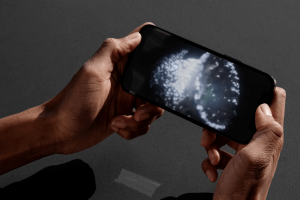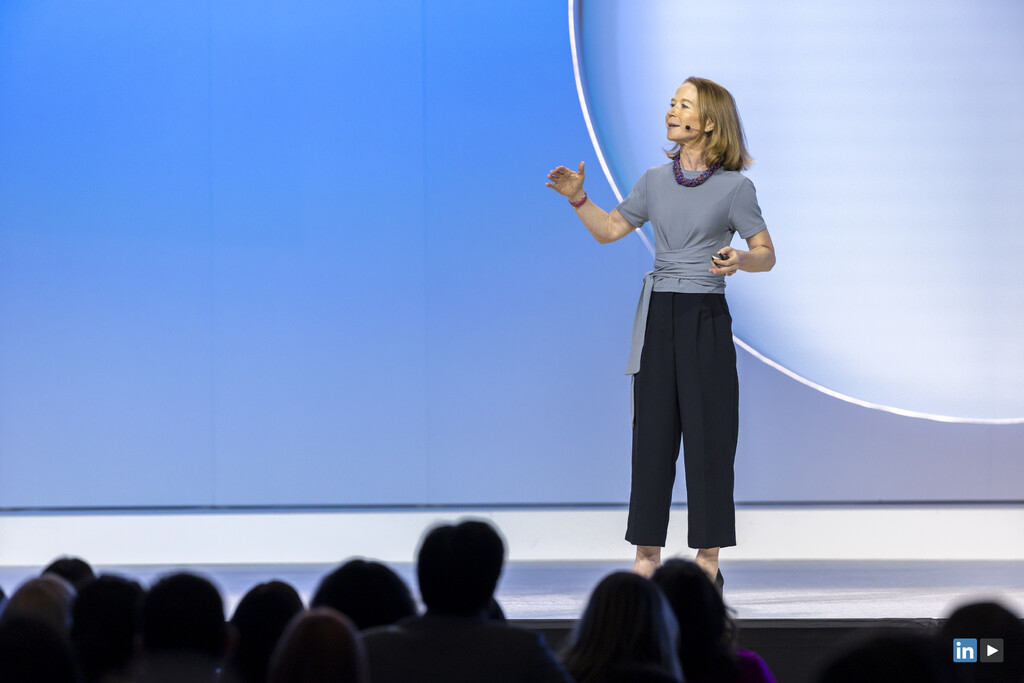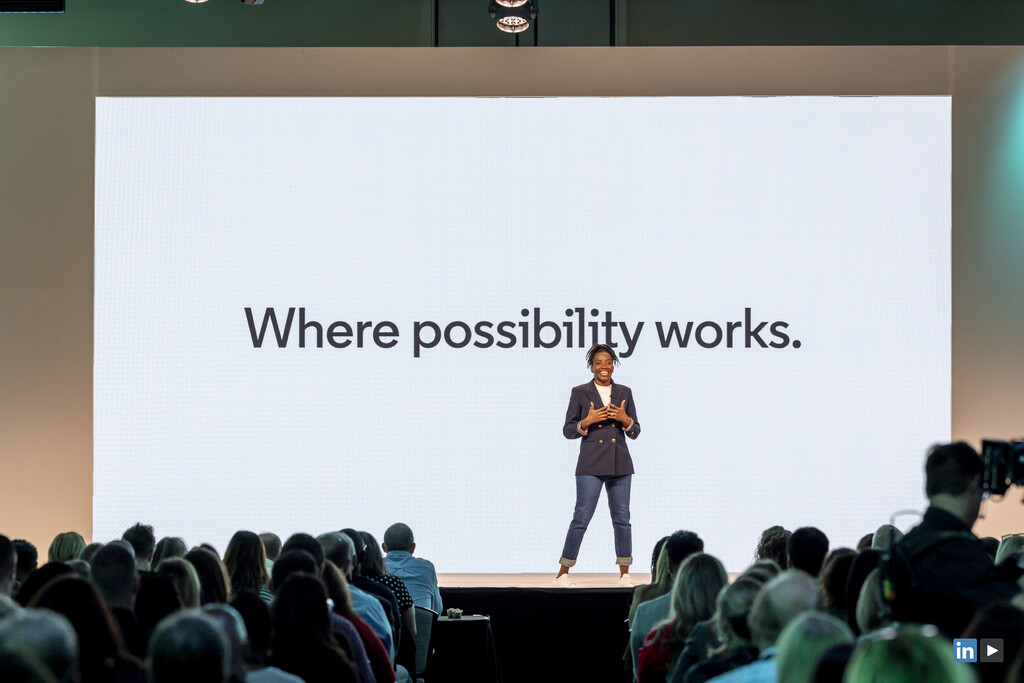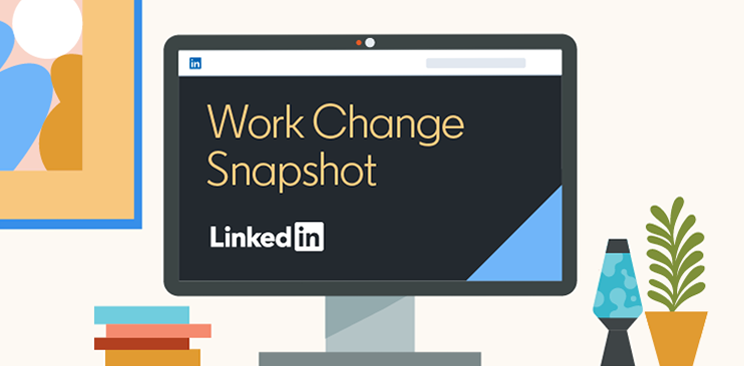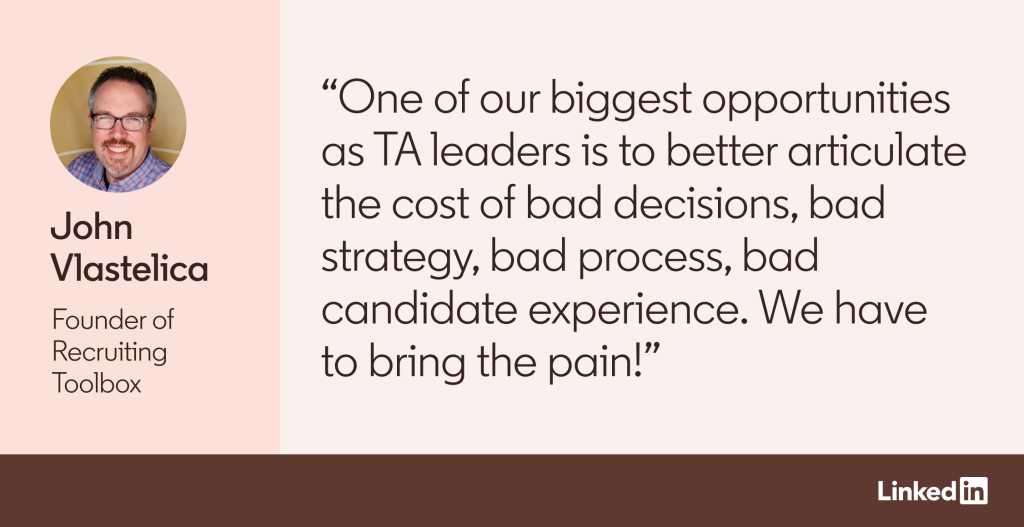When change happens so fast it makes you dizzy, you usually have two choices: You can curl up on the couch with a cup of hot tea and wish everything would stay the same. Or you can view change as an exciting opportunity to evolve and grow.
Futurist April Rinne, author of Flux: 8 Superpowers for Thriving in Constant Change, falls squarely in the latter camp. “I’m going to ask you to fall in love with change,” April told her Talent Connect audience earlier this month. “When you do that, you can improve your tolerance for uncertainty and harness the unknown to drive positive change.”
As anyone in the talent world knows, the workplace has experienced head-spinning uncertainty and change over the last few years. Only a generation or two ago, employees often stayed with a company for life. But last year, April noted, 22% of workers were in their jobs for less than one year and 33% were there for less than two years. LinkedIn has transformed the paper resume, which may one day soon join the ranks of the mastodon. And then there’s AI, which is poised to change . . . well, everything.
Whether you love or hate it, change is inevitable. So why not learn to embrace it? Here are four tips from April to help you do just that.
1. Consider your ability to embrace change a valuable skill
“In a skills-first world, embracing change is the No. 1 skill we need,” April said. “And it comes from the inside out.” The reason people struggle with change, she explained, is that a lot of things happen that we can’t control — which can feel scary. When we have a say in creating change, we tend to view it positively.
“But when we embrace change, we create newness and growth,” she added.
2. View change with hope, rather than fear
If you’re experiencing change you don’t want or didn’t see coming, there are still ways to flip your perspective to become comfortable with it.
“One of the most important factors in whether we love or hate change, whether we embrace it or resist it,” April told the audience, “is if we see it from a place of hope or fear.” Fear shuts us down and makes us anxious. “In contrast, hope lights us up,” April said. “Hope brings in creativity and signals an openness and willingness to try new things.”
She explained that she’s not talking about “naive hope” but “hope that’s done its homework” and knows what’s at stake — yet still believes a more equitable, sustainable world is possible.
3. Exhibit curiosity
If hope seems too hard, April suggested, try curiosity. Ask questions. Find out what the change entails. Consider how it might make your life better. And if your culture has traditions that help navigate uncertainty, lean into those. In Japan, for example, there’s the concept of wabi-sabi, which celebrates impermanence, imperfection, and the transitory nature of all things. Concepts like this can help people navigate change.
“My point,” April explained, “is simply that curiosity and culture can go a long way toward hope and driving change.”
4. Adopt a “flux mindset” rather than a “growth mindset”
In 2006, Stanford psychologist Carol Dweck introduced the idea of the “growth mindset,” which described people who believe they can grow through hard work and input from others.
“Professor Dweck’s research and insights are phenomenal,” April told the audience. “But a growth mindset doesn’t really address how we deal with constant, relentless change and uncertainty.”
For that, she said, we need a “flux mindset.” She described this as the ability to see all change — good, bad, expected, unexpected, and especially the stuff you don’t control and just wish would go away — as an opportunity to learn, grow, and improve.
“I’m talking about falling in love with how rich and complex and extraordinary change can be,” she said, “and the fact that every single day you can improve how you prepare for and navigate it better.”




